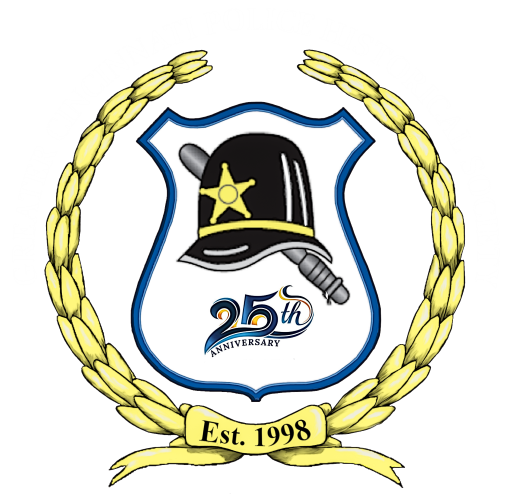Age: 26
Served: 20 months
April 4, 1886 to December 2, 1887.
OFFICER
Frank was born September 29, 1862 in Cincinnati to Prussian-born physician, Dr. Emil Hugo Robert Seip and Katharina (Heintzmann) Seip.
Dr. Seip immigrated to America 1853. He married Katharina as St. Joseph Church on December 18, 1856 and began building a family with Charles, born in 1858, and Frances Anna (Fanny), born in 1959. On April 22, 1861, during the Civil War, Dr. Seip enlisted as a Captain in Company B of the 10th Ohio Regiment. He was honorably discharged on June 3, 1861.
Frank was born three months later, and the couple added a fourth child, Bertha Wilhelmina, during June 1864. She died on March 13, 1865 and during the same time period, so did Katharina – possibly from childbirth.
Dr. Seip married again, Mary Rieber on January 27, 1867, and they had another son, William Theobald, on October 3, 1867. During 1869, the family lived at 640 Race Street.
We do not know what happened with his second wife, but Dr. Seip married a third time to Margarette Bossenberger. That union produced another child on June 4, 1872, and they named her Bertha (after the child who died).
They lived at 353 Broadway in 1875, 392 Race Street in 1877, and 40 Fifteenth Street from 1879-1881. By then, a teenager, Frank started a career as typesetter at the Cincinnati Free Press. They moved to 337 Walnut by 1885 and to 106 Pleasant Street in 1886.
On March 31, 1886, the Ohio Legislature succeeded in passing a constitutional statute that dissolved the 400-man Cincinnati Police Force and placed formal law enforcement under the power of a non-partisan Police Commission. A special election was held, and, on April 4, 1886, the mayor swore in dozens of patrolmen. Frank was one of those elected by the Tenth Ward; but he still had to go through, historically, the first intellectual, medical, psychological, and physical examinations ever required for a municipal police department. Only the most competent and uncorrupted were rehired to the new 300-man Police Department under the new non-partisan Police Commission.
Frank was one of the first accepted for testing one month after the Commission was established. In the flurry to re-staff the department, he was accelerated through the testing processes and officially nominated on May 4th. He was re-appointed Patrolman on May 24, 1886 and assigned to the Third (Bremen Street) District. Soon after, Patrolman Seip was reassigned to Patrol Company No. 1 on 9th Street.
INCIDENT
Three months into his career, on July 4, 1886, Patrolman Seip participated with other officers in the arrest of a drunken man. The prisoner fiercely resisted and, during the scuffle, bit Patrolman Seip’s thumb, severely lacerating it. Patrolman Seip bandaged it and allowed it to heal on its own; but he was eventually overtaken by a raging fever and diagnosed with septicemia (blood-poisoning). For some time he lingered in critical condition, but “owing to good care and a strong constitution,” he pulled through. He resumed his duties, this time with Patrol Squad No. 3.
DEATH
The poison was still in him as evidenced by large blotches covering his face and hands. During mid-November 1887, the poison overtook Patrolman Seip again. He took to his bed, treated by his father. He would not overcome the poison this time. Patrolman Seip died at noon on Friday, December 2, 1887.
He was predeceased by his mother, Katharina Seip, and sister, Bertha Whilhelmina Seip. Patrolman Seip was survived by his father, Dr. Emil Seip; stepmother, Margaretha Seip; siblings, Charles (Mary) Seip and Fannie A. (August) Herold; stepbrother Wilhelm Seip, and stepsister, Bertha Seip; and niece and nephews, Helen Herold, Adolph Herold, Arthur Herold, and Edmond Herold.
On December 4, 1887, a large number of friends, including Mayor Amor Smith, Jr., and Captain Hadley, followed him to his grave. They were escorted by the First Company of Police, headed by the Germania Band. Following them was Patrol No. 3. He was buried “with imposing honors” in the German Protestant (now Walnut Hills) Cemetery in Section 5, Grave 304, Row 16. Lieutenants Gill, Duffy, and Heheman and Patrolmen Bulmer, Adams, and Borck served as pallbearers.
EPILOGUE
Dr. Emil Seip died on May 14, 1900. His third wife and her daughter and family moved to Detroit.
If you know of any information, artifacts, archives, or images regarding this officer or incident, please contact the Greater Cincinnati Police Museum at memorial@police-museum.org.
This narrative was further researched and revised September 2, 2021 by Cincinnati Police Lieutenant Stephen R. Kramer (Retired), Greater Cincinnati Police Historical Society President, with research product provided by Cincinnati Police Sergeant David R. Turner (Retired), Greater Cincinnati Police Historical Society Researcher. All rights are reserved to him and the Greater Cincinnati Police Museum.


